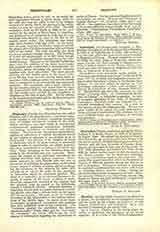

Chastellain (or CHASTELAIN), GEORGES, a Burgundian chronicler, b. in the County of Alost, Flanders, in 1403; d. at Valenciennes in 1475. He studied at Louvain, and, after a few years in the army, travelled in England and France. He next entered the service of Philip the Good, Duke of Burgundy, whose successor, Charles the Bold, coming to Valenciennes in 1473, to hold a chapter of the Golden Fleece, conferred upon him the honor of knighthood, with the title of Indiciarius of the order.
Chastellain’s more important works include (I) “Chronique des choses de mon temps”, a history of the years 1417-74, of which only fragments remain, continued after Chastellain’s death, by his disciple, Jean Molinet. It was first edited by Buchon in “Les chroniques nationales” (1827) and reedited by Kervyn de Lettenhove (8 vols., Brussels, 1863-67). (2) “Recollections des merveilles advenues en mon temps” (Antwerp, 1505). (3) “Chronique de Messire Jean de Lalaing”, a delightful biography. In spite of excessive partiality to the Duke of Burgundy, Chastellain’s historical works are valuable for the accurate information they contain. As a poet he was famous among his contemporaries. He was the great master of the school of grands rhetoriqueurs, whose principal characteristics were fondness for the most artificial forms and a profusion of latinisms and graecisms.
LOUIS N. DELAMARRE

